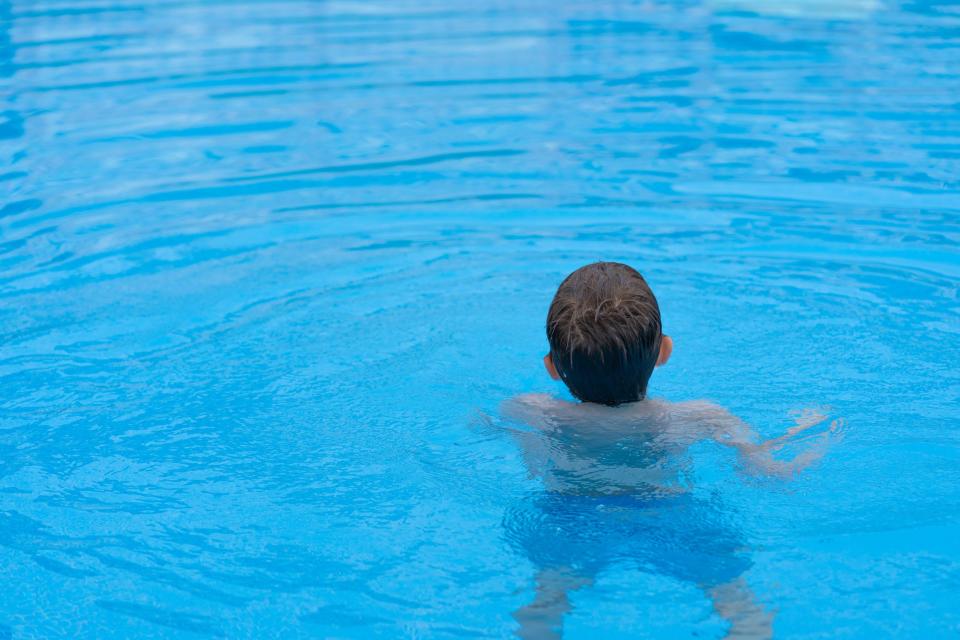Drownings are up. See five ways to prevent kids from drowning.
As heat waves hold us in their grip this summer, more people will be tempted to cool down in the water.
Before parents let kids loose at the pool or beach, they should refresh themselves on drowning prevention, experts say. Drowning incidents are increasing in the U.S., according to a recent federal health report. Drowning is the leading cause of death among 1- to 4-year-olds. These tragedies are avoidable.
“It doesn’t have to be this way; it is entirely preventable,” said Adam Katchmarchi, CEO of the nonprofit National Drowning Prevention Alliance. “It's within every family's power to gain this information to keep their kids safer.”
Swimming deaths surpassed 2019 pre-pandemic numbers, with 500 more deaths each year between 2020 and 2022, the Centers for Disease Control and Prevention study found. Over 4,500 people died by drowning each year from 2020 to 2022. Deaths are more frequent among Black and Indigenous people, partly due to historic barriers to aquatic recreation and the lack of swim classes in communities of color.
CDC researchers said the findings highlight the urgency of caregivers knowing prevention strategies, especially since the professionals who know the basics aren't around. The pandemic disrupted supervised swim settings and lessons previously available during the summer. Without lifeguards and teachers to spread the word, parents need to shoulder the burden and train themselves in basic swimming and water safety, researchers said.
Rip currents kill 4 in 48 hours: Panama City Beach on pace to be deadliest in US
At the start of summer, USA TODAY is sharing the five simple steps from the National Drowning Prevention Alliance for parents to protect children from around the water.

Choose pools with barriers, gates
Many drowning deaths occur outside of swim time – when no one is expecting children to be in the water, said Dr. Erin Muckey, medical director of the Rutgers University Hospital Emergency Department and an emergency medicine professor.
Parents should install self-closing or self-latching gates or alarms to prevent unattended children from accessing the pool.
“This is something that we should be thinking about at the community level,” Muckey said.
Really watch your kids in the water
Constant vigilance can go a long way when children are in the pool, Muckey said. A designated, non-distracted watcher who isn’t texting or eating but just keeping their eyes on children in the water can be a lifesaver.
Little kids are at greater risk of drowning, according to the World Health Organization. Often, parents get distracted while supervising younger kids in the water. It's key for parents to remember older teens may engage in risky behavior, like drinking alcohol while swimming, WHO said.
Children ages 1 to 4 are at greatest risk of drowning. After this group, the second highest drowning rate is among people 65 and older. In 2022, there was a 19% increase in people ages 65 to 74 drowning from before the pandemic, in 2019. A 2021 federal report listed drowning as a major fatal hazard for older people in pools, bathtubs and spas.
Learn to swim
Swimming isn't just about hopping in. Swimmers requires some instruction. About 40 million American adults, 15% of adults, don’t know how to swim, according to the CDC. Over half of adults have never taken a swim lesson.
More than a third of Black adults say they don’t know how to swim, while nearly two-thirds of Black adults and close to three-quarters of Latino adults report they've never taken a swimming lesson, the CDC said.
Dengue fever: CDC warns of increased dengue infections, virus spread through mosquito bites
People don't know how to swim for a variety of reasons. In the CDC report, researchers urged more community-based training in areas where people were historically excluded from pools or beaches due to racism and segregation. Some people avoid it due to the cost of lessons or pool membership. Others fear water or feel uncomfortable in swimwear.
It's never too late to learn to swim, regardless of age. Lessons are available through the American Red Cross, YMCA and other programs.
Wear approved life jackets
People venturing out into open water or boating should use life jackets approved by the Coast Guard.
Children can wear water wings or a float belt in the shallow end of the pool if a parent is in tow. This can help novice swimmers gain confidence in the water. However, these devices aren't designed to keep children afloat with their faces out of the water, Muckey said.
While at the lake, parents should put their children in approved life jackets.
Prepare for emergencies
CPR training is crucial in a drowning emergency. That means parents, guardians and babysitters must prepare in advance. Having a trained responder on site can save lives. The American Heart Association and Red Cross offer information to find a training near you.
It's also important to have a charged phone on hand to call 911. Experts suggest supervisors remain alert with their phones ready. In other words, you shouldn't be scrolling Instagram while watching kids in the water.
This article originally appeared on USA TODAY: Drowning deaths are preventable: 5 ways to keep kids safe


